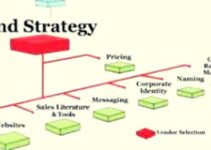Customer loyalty is the process of developing an emotional relationship between the company and the repetitive customers. It starts from the good experience of customers with the company. The loyal customers would purchase things from you repetitively, excitedly spread the name of the brand through word-of-mouth marketing, and connect with you on various channels. Today, we’ll discuss the top 10 metrics on how to measure customer loyalty.
How to Measure Customer Loyalty – Top 10 Metrics
Some of the top 10 metrics on how to measure customer loyalty are as follows;
Customer Loyalty Index (CLI)
CLI (customer loyalty index) is a specific metric and tool that would help you to evaluate and track the loyalty of customers over a period of time. The CLI survey focuses on three main questions upselling, repurchases, and NPS.
- Likelihood of you trying the other products and services of the company
- The likelihood of you purchasing the products repetitively
- Probability of you referring it to your friends and acquaintances in your social circle
The answer of customers scaled from 1 to 6; 1 means highly likely and 6 suggests not likely. When it comes to calculating the CLI, you should determine the average of all three questions. The thing you should keep in mind while measuring and evaluating is that the intention of customers isn’t actionable or reliable. It is better to present customer loyalty in a better way if you’re sending out the survey regularly.
Customer Lifetime Value (CLV)
CLV (customer lifetime value) is the expected profit margin that the company earns during the whole relationship and connection with the average customer. The CLV would give you a better idea that how much more the average customers are purchasing from you during their business interaction with you.
The CLV and loyalty of customers are almost the same things. If a company has got a high number of loyal customers, it would have a higher CLV. The formula for determining the customer lifetime value is as follows;
Lifetime Value = Retention Time Period * Number of Transactions * Average Value of Sale
Customer Life Time Value = Lifetime Value * Profit Margin
Upsell Ratio
Upsell ratio is the same as the repetitive buying rate, but it comprises various product offers of the company. When it comes to measuring the upsell ratio, you should divide customers that have purchased more than one type of product by those that have purchased only one type.
It is highly probable that the loyal customers would buy additional products from you, and the upsell ratio would engage loyal customers. It is important to mention here that the higher differentiation of the additional products, implies higher product loyalty. For instance, if customers purchase the laptop from the same company that they have purchased a mobile phone, it shows the higher loyalty of customers that they’re purchasing relevant products.
Upsell Ratio = Customers Purchased More Than One Type of Products / Customers Purchased Only Types of Products
Repeat Purchase Rate (RPR)
The RPR is the total number of customers that have visited your shop multiple times for shopping. Repetitive buying doesn’t mean the loyalty of customers, but it is easier to establish brand loyalty with repetitive customers.
The conversion rate of repetitive customers is roundabout 74%. The retaining cost of existing customers is much higher than acquiring new ones. The formula of RPR is as follows;
Repetitive Purchase Rate = Customers that Have Purchased Multiple Time / Total Customers
Net Promoter Score (NPS)
NPS is a specific tool or metric that would help you to measure the satisfaction level of customers. It surveys people and asks them the likelihood of referring the company’s product to the people they know. In the NPS survey, customers have to scale their experience from 0 to 10. The promoters select 9 or 10, and detractors choose 0 to 6.
The higher the score of NPS, the better it would be. The above 50 score is good, and the above 70 is excellent. The formula of NPS is as follows;
Net Promoter Score = %age of Promoters – %age of Detractors
The drawback of NPS is that it offers you the intentions of customers that you can’t rely on. The customers would think that they would refer the product to their friends, but they won’t do it. In other words, it is not actionable. The NPS would help you to measure the sentiments of customers.
Customer Engagement Score
The CES would help you to determine the engagement of customers with your company. Every customer receives a specific score based on its usage. However, it is highly useful for SAAS brands and online businesses and companies. When it comes to measuring CES, you’ll require the following inputs;
- KPIs (key performance indicators)
- Number of Actions Taken
- Usage Level
- Usage Frequency
- Activity Time
Every input depends on a number of factors. When you integrate a lot of input information into a single number that is easy to measure and evaluate. However, it is confusing and time-consuming to check out all the inputs separately. The formula of CES is as follows;
Customer Engagement Score = W1N1 + W2N2 + ……………. + WtNt
It is the weight of Input, and Nt is the occurrence of input.
Redemption Rate
The redemption rate would help you to measure the loyalty level of members in the customer loyalty program. When it comes to finding the redemption rate, you should divide the total redeemed coupons by the total issued coupons.
The loyalty program makes customers loyal to the company by making them feel good about earning cash rewards and other incentives. The redemption rate would help you to measure the growth and success of customer loyalty strategies of the company.
Redemption Rate = Redeemed Coupons / Issued Coupons
Active Engagement Rate
An active engagement rate would help you to find the success of your loyalty program. In order to calculate the active engagement rate, you should divide the total number of actively engaging customers in the loyalty program by the total number of users. It allows you to determine how many customers are earning and redeeming points in the loyalty program. It offers you an insight on how to increase the percentage.
Active Engagement Rate = Actively Engaging Customer in the Loyalty Program / Total Customers
Participation Rate
Participate rate is the total number of customers that are enrolling in the customer loyalty program. The participation rate would show you whether the loyalty program is attracting the attention of your customers or not. However, it offers you an insight into the performance of a loyalty program, sense of customer behavior, and develops improved strategies.
Participation Rate = Total Members Participating in Loyalty Program / Total Customers
Customer Churn Rate (CCR)
CCR would help you to determine the total number of customers that you have lost; it is a part of every business journey. It offers you an insight into why you’re losing customers and what caused them to stop making purchases, and the steps you should take to minimize the churn rate and amplify the customer experience.
Conclusion: How to Measure Customer Loyalty – Top 10 Metrics
After an in-depth study of the top 10 metrics on how to measure customer loyalty; we have realized that loyal customers are a great asset to the company. If you’re measuring the loyalty of customers, then you should keep in mind the abovementioned tips and suggestions.

Ahsan Ali Shaw is an accomplished Business Writer, Analyst, and Public Speaker. Other than that, he’s a fun loving person.


